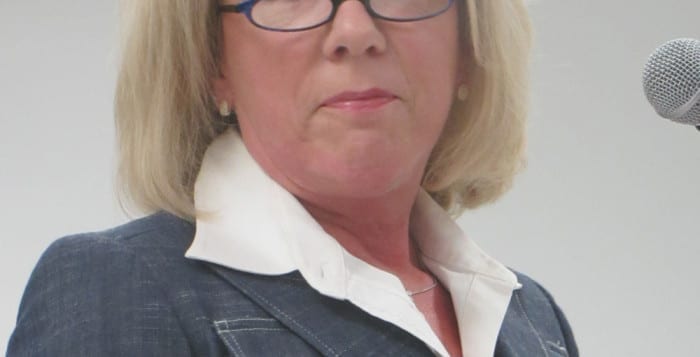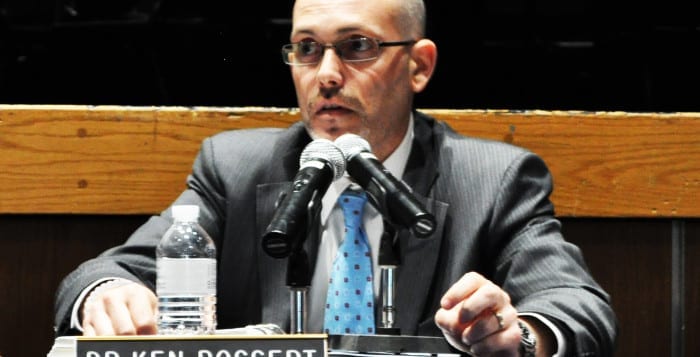Though it may seem counterintuitive, administrators in Three Village are encouraging Ward Melville High School students to bring their smart phones, tablets and other digital devices to class.
It is part of the Bring Your Own Device (BYOD) initiative designed to enhance students’ academic experience by allowing them to log into the district’s Wi-Fi network for educational resources.
In a comprehensive report to the Three Village school board last week, Kerrin Welch-Pollera, the district’s executive director of instructional technology, spoke of those and other technological initiatives now in play or soon to be introduced at the elementary and secondary levels. She also gave an update on the district’s use of technology to improve security at the school campuses.
Speaking specifically of the BYOD program, Welch-Pollera said that there are 3,336 devices currently connected to the district’s Wi-Fi network. They are all running Google Apps for Education. She explained that this special version of Google lets students do searches in an environment that “is pretty much closed off to the public” and has no advertising.
Also, she said, teachers can share documents with their students through Google Classroom.
For students who don’t bring their own devices, there are 23 Chromebooks available for check out from the high school library at the beginning of the day. There is usually a line for them, Welch-Pollera said.
Additional resources include access to Microsoft Office 365, which staff, students and parents can download to their home devices. BYOD will be piloted at the junior high schools this fall.
Welch-Pollera also spoke about instructional technology helping to standardize curriculum across grades and managing the Destiny online library system. As an example, Destiny has eBooks that can be read by an entire grade at the same time. This tool has made the district-wide fifth grade Bull Run project possible and is facilitating a voluntary seventh grade summer reading assignment about cyber bullying.
Other instructional support has come with the purchase of seven Smart tables, which work like smart boards. Welch-Pollera told the board that two smart tables will be used in the new preschool program. Five are already being used in special education classrooms, she said. The district also has 150 iPads and 3D printers in the secondary schools and will receive an additional 123 Chromebooks from BOCES through Race to the Top funds, Welch-Pollera said.
This school year also saw a major upgrade of the district’s security technology with the addition of access cards, entryway cameras and driver’s license scanners. Welch-Pollera also noted upgrades to Infinite Campus, the district’s parent portal, and software training workshops for teachers. In July, the district will roll out a new website. A new, customizable district app will be introduced in the fall.
Additions to the curriculum will include an “hour of code” initiative to be led by the new elementary STEM teachers. The new program will introduce programming language to elementary school students. A computer science class will be offered at the high school in January and a technology class at each junior high.
Welch-Pollera will work with administrators and teachers to determine how to spend the district’s $3.39 million allocation of Smart Schools Bond money, state funds earmarked for prekindergarten facilities, security technology, Internet connectivity and technology for learning.
The district will develop a 3-to-5-year plan that outlines goals for instruction and how technology can support it, she said. There is no time limit for when the district can spend the money, but it cannot use the funds for professional development, technical support, software or subscription services. Being considered are network and wireless infrastructure upgrades to make sure there are access points in every classroom, additional security cameras, upgraded phone systems and additional classroom projectors and displays, Welch-Pollera said.






